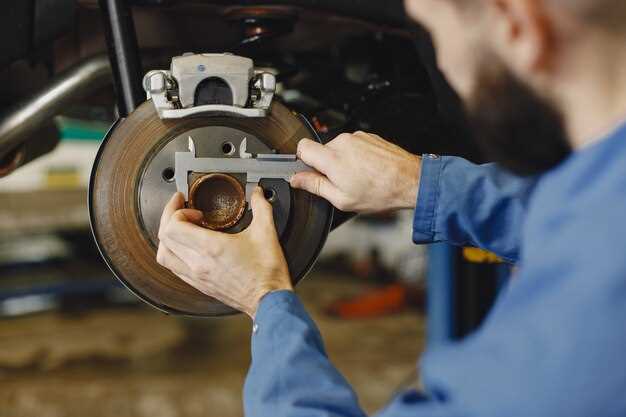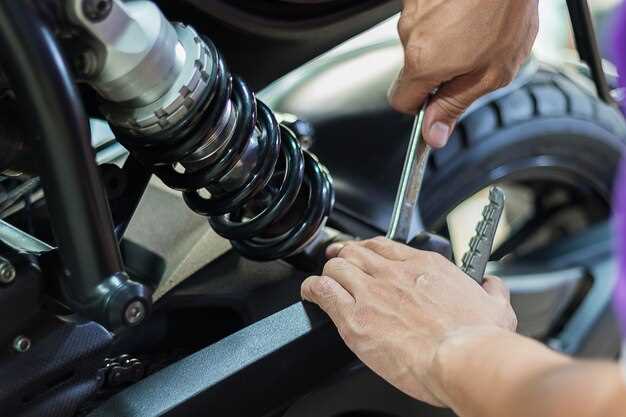
As weekend racers prepare to hit the track, one of the most critical upgrades they can make is to their braking system. Performance brake kits are designed to provide enhanced stopping power, reduced fade, and improved overall handling. However, the installation of these kits requires careful consideration and attention to detail to ensure optimal performance and safety on the racecourse.
Understanding the specific components of performance brake kits is essential. From high-performance rotors to advanced brake pads, each part plays a vital role in achieving the desired braking performance. Equipping your vehicle with the right tools and knowledge for installation can make a significant difference when it comes to lap times and, more importantly, safety.
This guide will provide crucial tips for installing performance brakes, ensuring that weekend racers can maximize their vehicle’s potential on the track. By following these guidelines, drivers can enjoy the thrill of racing while having confidence in their braking system.
Choosing the Right Brake Kit for Your Track Car
When it comes to performance on the track, selecting the right brake kit for your car is crucial. The right components can enhance your vehicle’s braking efficiency, ensuring better handling and safety during races.
Here are key factors to consider when choosing a brake kit:
- Type of Racing: Determine whether you’ll be participating in sprint races, endurance events, or time trials. Each type has different brake demands.
- Car Weight: Heavier cars may require more robust braking systems to achieve improved stopping power.
- Brake Pad Materials: Select pads suited for high temperatures and aggressive braking. Common options include ceramic, metallic, and carbon composite materials.
- Rotor Size and Type: Larger rotors generally provide better heat dissipation and improved performance. Choose between slotted, drilled, or plain rotors based on your needs.
- Caliper Configuration: Depending on your track car setup, consider either single or multi-piston calipers. Multi-piston calipers offer better distribution of force and improved modulation.
- Compatibility: Ensure the brake kit fits your specific make and model. Misfit kits can lead to inadequate performance and safety issues.
- Upgraded Components: Look for kits that include high-quality hardware, such as stainless steel brake lines, which can enhance overall braking performance.
Before finalizing your choice, compare different kits and read reviews from other weekend racers to identify the best options for your track car. Consider consulting a professional mechanic or a racing expert to make an informed decision.
Investing in the right brake kit will not only improve your lap times but also contribute significantly to your safety on the track.
Essential Tools and Equipment for Installation

To successfully install performance brake kits on your cars, having the right tools and equipment is crucial. Here are the essentials you’ll need:
1. Socket Set: A complete socket set is necessary for removing and installing wheel lug nuts, caliper bolts, and other components. Make sure to have both metric and imperial sizes, as cars can vary significantly.
2. Wrench Set: A high-quality wrench set will help you work with various fasteners during the installation. Both open-end and box-end wrenches will prove valuable.
3. Torque Wrench: Proper torque is vital for brake components. A calibrated torque wrench ensures that bolts are tightened to the manufacturer’s specifications, preventing failure on the track.
4. Brake Piston Tool: When replacing brake pads, a brake piston tool is essential for retracting the caliper pistons. This ensures that new pads fit correctly without damaging the calipers.
5. Brake Line Wrench: A brake line wrench helps prevent rounding off the nuts on brake lines, allowing for easier manipulation without damaging critical components.
6. Jack and Jack Stands: A sturdy jack and jack stands are necessary for safely lifting your car. Ensure that the jack is rated for your car’s weight and that the stands can support it securely.
7. Brake Cleaner: Keeping the components clean is vital for optimal performance. Use brake cleaner to remove grime from rotors, calipers, and pads before installation.
8. Oil Absorbent Pads: Utilizing oil absorbent pads can help maintain a clean workspace by soaking up any spills during installation, particularly when working with brake fluid.
By equipping yourself with these essential tools and equipment, you’ll ensure a smoother installation process for your performance brake kits, enhancing safety and efficiency on the racetrack.
Steps for Proper Brake Caliper Installation
Installing brake calipers correctly is crucial for the performance of your racing cars. Following a systematic approach ensures reliability and efficiency. Here are the essential steps for proper brake caliper installation.
| Step | Description |
|---|---|
| 1. Gather Your Tools and Kits | Before beginning the installation, collect all necessary tools and performance brake kits. This includes socket wrenches, a torque wrench, and any brake line tools you may need. |
| 2. Remove the Wheel | Lifting the car securely using jack stands, remove the wheel to access the braking system. Ensure that the vehicle is stable before proceeding. |
| 3. Detach the Old Caliper | Carefully disconnect the brake line from the old caliper. Remove the bolts holding the caliper in place and take off the old unit. Be cautious of brake fluid spills. |
| 4. Prepare the New Caliper | Inspect the new caliper from your performance kits for any damage. Install the appropriate brake pads into the new caliper, ensuring they are positioned correctly. |
| 5. Mount the New Caliper | Position the new caliper onto the brake rotor and secure it using the original bolts. Make sure to tighten them to the manufacturer’s specifications for optimal performance. |
| 6. Reattach the Brake Line | Reconnect the brake line to the new caliper. Ensure there are no twists in the line and that it is securely tightened to prevent leaks. |
| 7. Bleed the Brake System | To remove air from the brake lines, bleed the system by having a partner press the brake pedal while you open the bleed valve. Repeat until fluid flows without bubbles. |
| 8. Reinstall the Wheel | Once the system is bled, place the wheel back on and secure the lug nuts. Lower the car and perform a final check on all connections. |
| 9. Test the Brakes | Before hitting the track, pump the brake pedal to ensure proper engagement. Testing at low speeds is essential to confirm functionality. |
By following these steps diligently, racers can achieve optimal brake performance, leading to improved handling and stopping power on the track.
How to Adjust Brake Balance for Optimal Performance
Achieving optimal brake balance is crucial for weekend racers looking to enhance track performance. A well-balanced brake system ensures that your vehicle stops effectively without compromising stability. Here’s how to adjust brake balance using performance brake kits.
1. Understand Brake Balance
Brake balance refers to the distribution of braking force between the front and rear wheels. An ideal setup prevents skidding and maintains control during hard braking. For most setups, a front-biased balance is preferred, as it improves stability but excessive front bias can lead to premature tire wear and reduced rear grip.
2. Choosing the Right Brake Kits
Select performance brake kits that suit your vehicle and driving style. Kits typically include calipers, rotors, pads, and lines that can significantly impact your braking performance. Ensure that the components are designed to work together for the best results.
3. Adjusting Bias with Brake Pad Type
Different brake pads have varying friction characteristics, which affect how quickly and forcefully your brakes respond. If you find that your front brakes are locking up too easily, consider using a pad with lower friction for the front and a higher friction pad for the rear to achieve better balance.
4. Installing Adjustable Proportioning Valves
Install adjustable proportioning valves to fine-tune brake balance. These valves allow you to control the amount of brake force applied to the rear wheels. Start with a conservative setting and progressively adjust until you find a balance that feels right during track sessions.
5. Testing on the Track
The best way to assess brake balance is through real-world testing on the track. Pay attention to the feedback from your vehicle–do the front tires lock up before the rears? If so, adjustments will be necessary. Make incremental changes and evaluate their impact during laps.
6. Analyze Tire Wear
After several track days, examine your tire wear patterns, as they can provide insight into your brake balance. Uneven wear could indicate that the brake distribution needs adjustment. Use this data to tweak your setup for improved performance.
By understanding and adjusting brake balance effectively, you can ensure your vehicle handles optimally under braking conditions, leading to faster lap times and enhanced control on the track.
Testing Your New Brakes: What to Look For on the Track
After installing performance brake kits, it’s crucial to thoroughly test your new brakes in a controlled track environment. Here are key aspects to assess during your testing session:
-
Initial Feel and Response:
- Evaluate the pedal feel; it should be firm but not overly stiff.
- Check for immediate response when you apply pressure on the brake pedal.
-
Stopping Power:
- Monitor how effectively your brakes reduce speed during hard braking scenarios.
- Test brakes from various speeds to gauge performance consistency.
-
Heat Dissipation:
- Assess brake performance after multiple stops to determine how well they manage heat.
- Look for signs of fade; brakes should maintain effectiveness regardless of temperature.
-
Noise and Vibration:
- Listen for abnormal noises during braking, which could indicate misalignment or wear.
- Check for vibrations; the car should feel stable when brakes are engaged.
-
Pedal Travel:
- Measure the distance the pedal travels before engaging the brakes. It should be consistent and predictable.
- Any increase in travel may suggest issues with installation or components.
Taking the time to analyze these factors will ensure your brake system is functioning optimally. Proper testing not only enhances your performance on the track but also ensures your safety while racing.
Maintenance Tips After Installing Performance Brakes

After successfully installing performance brake kits on your cars, proper maintenance is crucial to ensure their longevity and effectiveness. Regular inspection of the brake pads and rotors should be conducted to identify any signs of wear or damage. Look for unusual sounds during braking, which may indicate issues such as glazing or uneven wear.
Additionally, make sure to monitor the brake fluid levels and check for any leaks in the system. High-performance brakes generate more heat, requiring the brake fluid to be in optimal condition. Bleeding the brake system periodically can help maintain responsive braking performance.
It’s important to clean the brake components regularly to remove dust and debris that can accumulate during use. This helps prevent contamination that might affect braking efficiency. Using a designated brake cleaner will help maintain the integrity of the pads and rotors.
Inspect the brake lines and fittings for any signs of wear or damage. Upgrading to high-quality braided stainless steel brake lines can improve responsiveness and provide better protection against abrasion.
Finally, always adhere to the manufacturer’s recommendations regarding bedding procedures after installation. Proper bedding ensures that the pads and rotors break in together effectively, leading to optimal performance when racing on weekends.





